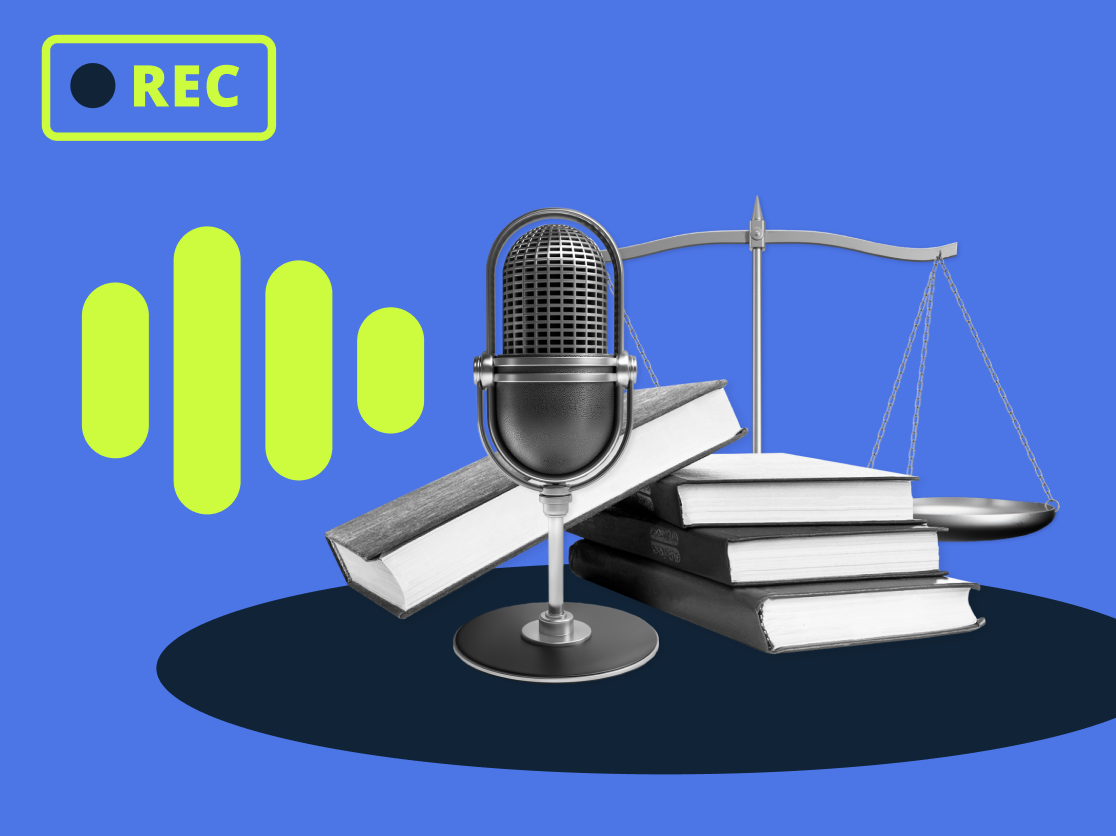Updated: 2017.02.22
In this article we cover:
- Who Digital Natives are;
- How communication patterns differ from generation to generation;
- What interaction models will become trending in the near future;
- How MightyCall virtual phone number helps small businesses predict the demands of their clients.
Future of communication: how do Digital Natives prefer to interact?
We are all living in the Information Age, where digital technology keeps advancing at an astounding rate. One of the most rapidly-evolving industries is communications. Within less than a century we’ve made a jump from primitive radio transmitters/receivers to manually-operated telephone switchboards and then ― to satellite technology, cell telephony. Now the pinnacle of communication is the internet, with its Voice-over-IP protocols, instant messaging and video calls. How will it impact business communication?
For a small business owner it is vital to monitor the communication trends. Efficient interaction with customers is required to attract new clients and generate sales. However, with the current rate of innovation, it’s not only crucial to keep up to existing standards, it’s also necessary to predict future trends. It helps to build a business communication model, adequate for the demands your near-future customers will pose. And the most viable way to do it is to analyze how today’s adolescents interact with each other, which channels they prefer and what forms of technology they use. So let’s look into the world of Digital Natives and try to learn a couple of useful hints.
Diginatives
Scientists generally agree that Digital Revolution started in the late ’70s when storing data in digital form became reliable and the mass proliferation of computers began. In 1990, cellphone connectivity reached 0.25% of the world’s population, while 0.05% of people became internet-users. By 2010, 7 people out of 10 had mobile phones and by 2016 half of the population used the internet.
The term “Digital Natives” was coined by education consultant Marc Prensky to describe children born when digital technology was already widely available. The exact period varies from country to country, but the thing Digital Natives have in common is a different way of thinking and processing information. Of course, their communication patterns also differ from Digital Immigrants (those who had to adopt digital technology in their adulthood). Digital Natives can give us a valuable insight into the future of communication styles, and by extension, they can show us what to expect from the virtual phone system of the future.
Digital Natives ― who are they and what do they want?
The recent proliferation of streaming services and their popularity among people under 21 shows that a new communicational model has been born. It is not so uncommon when a young person keeps his or her videochat client running for hours with multiple feeds. When physical presence is not required for interaction, communications needs are satisfied through digital means ― and broadband internet is more than adequate for the task. Without leaving their homes, youngsters can do homework together, play games together, indulge in their hobbies and get valuable pieces of advice from peers. Furthermore, it is now possible ― and isn’t considered rude ― to step out of conversation whenever you want and casually return to it later. Digital Natives have limited attention spans, but they are experts at multitasking.
In social studies, such communication style is dubbed synchronous/opt-in. Technically, “synchronous” means that data is transmitted as a continuous stream at a constant rate. Skype clones, and streaming services like Meerkat, YouNow or Periscope allow to communicate instantly across thousands of miles regardless of national borders and time zones. It opens a new avenue for collaboration, discussion and sharing your thoughts. And that is the reason why Digital Natives still prefer direct live communication to “asynchronous” means, such as email, voicemail or digital calendars.
“Opt-in” means optional. Digital Natives are free to choose how and when to dive into an always-on communications stream. They don’t feel obliged to postpone their current affairs in order to answer messages or calls ― “opt-out” (obligatory communication behavior) is an obsolete concept for them.
An overview of communication patterns throughout generations
Digital Natives are our future employees, and soon enough they will dominate our workforce landscape. However, any modern company’s staff includes employees of different generations. Their communication styles vary greatly, so productive teamwork requires taking their different interaction approaches into account. Needless to say, clientele is also not uniform and you have to cater for them all. So here’s how different generations prefer to communicate:
- Baby Boomers (born 1946 to 1964): Sync/opt-out. It is true that these people embraced modern communication technologies such as the internet and mobile phones, but they still prefer direct interaction. They grew up in the age of landline phones and accepted its limitations. Answering machines were a rare commodity, and you couldn’t learn who was calling before picking up. What’s more, a landline was shared among family members or office workers (i.e. even you aren’t anticipating a call at the moment, it may be crucial to your co-workers/ family members). To avoid missing important calls, answering the phone was obligatory. Certain protocols for making calls (don’t call late or during lunch-time) and answering (“Hello, Smith residence”) we commonly used.
Both at home and at work, Baby Boomers had to follow synchronous/opt-out communication model: their interaction was instant and they could not opt to ignore an incoming request. Even now Baby Boomers prefer phone communication out of habit. They are the main users of landline services and are unlikely to ignore an incoming call or leave a message unanswered. - Generation X (born mid 1960s to early 80s): Async/opt-out. Post-baby-boom kids were often neglected in their childhood, but grew up to be more educated, productive and family-oriented than their parents. It drove their communications preferences to asynchronous side, because it helped to save time and preserve privacy. Their tools of choice are fax, voicemail, email and digital calendars. Asynchronous technology gave birth to somewhat-more-lax attitude towards communication: you could deal with incoming requests “when you got to it”. On the other hand, corporate ethics forced Generation X to keep in touch, so certain unwritten rules were established. For example, you have to answer an email within 24 hours, voicemails should be returned the same day and call-back requests granted within a couple of hours.
- Millennials (born early 1980s to early 2000s): Async/opt-in. Millennials (aka Generation Y) are known to be the closest to Digital Native generation. Reliable connectivity was a norm during their school years and mobile phones made calling casual on-the-run activity. This communication boom led to certain “overdose” with human interaction and made longing for privacy even stronger. Thus, Millenials tend to prefer asynchronous channels — email, texting, social media messaging — where they can opt-in as they please. However, in contrast to Baby-Boomers, they are avid internet-users.
Generation Y had to deal with great volumes of “information noise”, so they developed mechanisms to filter out useless incoming queries and to prioritize valuable ones: spam filters, automated attendants, answering bots, blacklists and so on. Virtual phone numbers became indispensable for business owners to separate personal affairs from business. Available communication channels made it possible to share tasks and benefit from effective teamwork. More than that, Generation Y faces increasingly complex problems, which require participation of experts with comparatively narrow but deep levels of expertise (look at the recent scientific discoveries: they all are done by teams, not individuals). Cloud-based platforms/apps such as Slack are the new productivity tools that cater to this generation’s async/opt-in work style.
Step aside, Generation Z is coming
As you can see, all these generations had to solve specific communication problems and developed distinctive ways to do it. In terms of interaction, their behavior differs: they react differently when someone tries to reach them, they act differently when they need to get in touch with somebody. But what’s special about the most recent generation?
Generation Z (born in the 2000s and beyond): sync/opt-out. From their very birth these kids had all the modern technology at their fingertips: broadband internet, affordable smartphones, tablets, GPS, etc. But at a price. Their information environment is littered with fake data, spam, advertisement and other marketing/PR tools designed specifically to target their mothers and fathers. Naturally enough, Generation Z is developing its own communication model to remain sane in this mess.
These true Digital Natives are coming back to synchronous communication, although in a manner different from Baby Boomers. It appears that the current trend is “sync/opt-out.” Our children will strongly rely on automated filtration offered by sophisticated software. As with Google search engine, which displays search results based on your history and preferences, phone systems of the future will only forward the calls we should really answer. But not ordinary telephone calls, no. Even though Generation Z owns phones since early childhood, a recent research shows they don’t use them for calling. 94% of communication is carried out through instant messaging and VoIP.
Exploring the future with MightyCall
In response to these demands our virtual phone systems are getting smarter. Much like “VIP designation” on iPhone, which lets certain callers penetrate “Do Not Disturb” filters, hosted call-processing systems offer flexible call routing. In short, it allows to establish custom forwarding rules: a call to your virtual phone number will be forwarded to any of your devices at certain time (e.g. business hours), while late calls will be directed to voicemail. But it is possible to create a VIP list, so that really important calls reach you anyway.
Increased demand for synchronous communication means that customer care service employees have to act quickly and precisely: low response times, flawless forwarding and ability to delegate tasks to other team members are becoming standard. What we need is smart software that, once installed, turns your smartphone into a fully-fledged contact center agent. It will route incoming calls (mobile, landline and VoIP) and messages (SMS, tweets and relevant queries from social media) to the right person instantly. This removes the traditional call-center issue of multiple redirection from desk to desk: now two people who have connected before are reconnected again the next time the customer calls.
Sync communications become increasingly important for small business and a phone system adequate to these demands has eventually been designed. MightyCall enables every employee to act in real-time from any place and via any channel. It directly entails improved productivity and superior user experience. MightyCall’s mobile application operates as a versatile end-point for multiple communication channels and doubles as a handy teamwork tool with conference calls, to-do lists and task assignment.
If nothing else, Digital Natives’ preferences show us that the future of business communications is about real-time requests for instant answers. Currently, large corporations consider face-to-face interaction to be inefficient in terms of costs (live operators aren’t cheap and neither are multiple phone lines). Therefore, they employ a so-called “call avoidance” policy by hiding behind obscure voice menus and placing callers in never-ending queues. That, indeed, encourages self-service ― who wants to wait for a free live operator for 5-10 minutes?
But what’s good for the goose is not necessarily good for the gander. If a quasi-monopolist can afford to enhance its cost-efficiency at the expense of its customers’ time and efforts, it’s hardly an option for small businesses. According to researchers, an average attention span of today’s Digital Native is about 8 seconds. So if the result is not delivered instantly, this person will hardly trouble him/herself by reading overcomplicated manuals or watching long video instructions. He/she will easily move to a competitive business with decent real-time connectivity.
That’s where MightyCall virtual phone number can give you the edge over competitors. With its sophisticated call-processing system accessible through the exclusive mobile application, you can deliver superior customer assistance even if your staff is limited. What’s more, MightyCall supports VoIP telephony and direct calls from complimentary website widgets.
While large companies still target their services at Millenials, it’s time for small businesses to tune their business communication towards future clients ― Digital Natives. MightyCall virtual phone system allows you to do this easily and affordably. And what’s more important, all the other generations will also remain satisfied, because MightyCall is extremely flexible, fully customizable and able to work with multiple communication channels flawlessly. It’s time to get ready for Generation Z― subscribe to our service, get a virtual phone number and start receiving calls within minutes.































